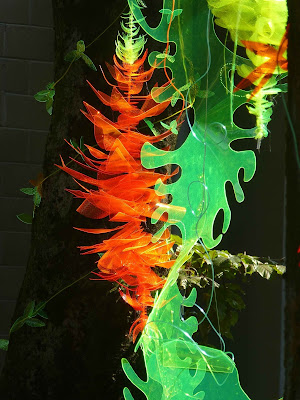Chrysanthemums Festivals have already begun in Japan. In Tokyo, they are held in parks and shrines between October and November.
This tradition started a long time ago, when Tokyo was called Edo and the passion for ornamental flowers spread from nobles to common people. During the Edo period (1603-1868), an increasing range of new hybrids not only enriched the large gardens of the noble families in Edo, but also the small plant collections cultivated in beautiful pots of the inhabitants with no gardens. Small shrubs and herbaceous plants were favoured and special attention was given to form in new flowers. Camellias, peonies, lotus, primulas, Iris ensata, Adonis ramosa, Ipomoea and Dianthus superbus are just few of the flowers that, over the years, gained the title of the most fashionable and sought after. There were also chrysanthemums, of course, not the native species, with little, simple flowers, but varieties introduced from China in the late eight century, mainly for their medicinal properties. Their beauty and prestige, which came from the power to provide Eternal Youth, soon conquered all, and the craze for chrysanthemums exploded between 1764 and 1772. In Edo, the best chrysanthemums were sold in the village of Somei, today Komagone area. In autumn, new varieties with poetic names and unusual forms were presented by nurserymen following strictly codified styles of cultivation and arrangement. The same styles that, last year, I saw at several Kiku (Japanese for chrysanthemum) Festivals in Tokyo.
Utagawa, Kunisada (1786-1864), 1853
I did not find stalls with the blue and white checkered roof that, in old prints, seems peculiar to flower exhibitions but the beauty and variety of flowers was amazing. Flowers are divided according to their size in large, medium and small. There are countless varieties for each group and many different styles to cultivate them. Large chrysanthemums of the 'astumono' variety, for example, can be cultivated in a three-branch plant, with a flower at the top of each stem. The three branches represent the sky, the earth and the man. Small flower chrysanthemums are preferred for more artistic arrangements, such as bonsai or dolls. 'Saga-giku', 'Ise-giku', 'Higo-giku' and 'Edo-giku' are the names of the main varieties of medium flower chrysanthemums. Their names recall their areas of origin and their shape and arrangement are even more special ...
For those travelling to Tokyo in these weeks, there is still time to discover them. Don't miss them and please let us have your photos!
Large flower chrysanthemum: 'astumono' grown in three-branch plantsFor those travelling to Tokyo in these weeks, there is still time to discover them. Don't miss them and please let us have your photos!

'kudamono'
'ichimonji', a disc of paper supports the petals
Large flower chrysanthemum but small plants: Darumazukuri
Small flower chrysanthemum: Kengai bed
Small flower chrysanthemum: Bonsai form
Photos:
TravelinaGarden, Hibiya Park, Tokyo, November 2015.
The Ninth Month (Kikuzuki) from the series annual Events for Young Murasaki Utagawa, Kunisada (1786-1864), 1853, woodblock print
Museum of Fine Arts, Boston
https://ukiyo-e.org/
Further reading:
Japan and the Culture of the Four Seasons, Haruo Shirane, Columbia University Press, 2012























